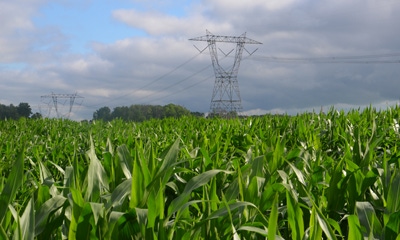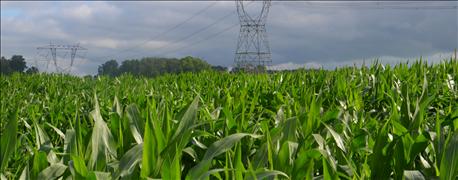
The Profit Planners panel tackles one of the toughest issues in agriculture: How do you know when it’s time to back off on high cash-rent land?
The panel includes: David Erickson, farmer, Altona, Ill.; Mark Evans, Purdue University Extension, Putnam County; Steve Myers, farm manager, Busey Ag Resources, Leroy, Ill.; and Chris Parker, retired Extension educator and hay and cattle farmer, Morgan County.
Question: About one-third of our cash-rent land comes up for renewal this fall. Leases range from $180 to $310 per acre, depending on quality of the ground. With tight budgets, we may need to give up some land until prices improve. How do we decide which land to give up?

CASH-RENT ADVICE: Would it be prudent to let go of some rented land up for renewal this fall? Here’s what the Profit Planners panel says about current land rent issues.
Erickson: I wouldn’t automatically assume you will need to give up some farmland. Start by reviewing past production and profitability on a field-by-field basis. Make sure you know what your actual cost of production is on each field. Determine what you can do to influence costs going forward. Be prepared to share your field information with the landowner in an effort to reach a rental rate that makes sense for both parties.
Evans: Location and profit history would be my top priorities. Other key evaluators would be risk — if the land is adjacent to sensitive areas like development or specialty crops where issues could arise. The landlord-tenant relationship history is also a key factor. Hold to the solid base and give up what is continually in question for various reasons, if you must give up land.
Myers: First, I encourage you to pursue an equitable arrangement with your landowners. Second, no one knows the individual farms and return for those properties better than you. Review your net income on each tract for this year and historically. Let that give guide you. Remember, the cheapest rent might not be your most-profitable farm, and the highest rent might not be your least-profitable land. Consider how any reduction in number of acres farmed may affect your entire operation in regards to labor and machinery.
Parker: The factors I see that should be considered in this decision-making process include: location/proximity, soils, soil fertility, yield, landlord relationships, maintenance needs and overall fit to your farming enterprise. How you prioritize each factor on your various rental acreages will determine the answers.
Summing up: The panelists made five key points. 1) Don’t automatically assume you will need to give up land until you do your homework. 2) Figure your costs and net returns on a field-by-field basis. 3) Consider sharing cost and return information with landowners, and attempt to reach an equitable agreement. 4) Don’t assume that your cheapest cash-rent land is your most profitable, nor that your highest cash-rent land is least profitable. 5) Determine how any changes you make will impact your overall farming operation in terms of labor, machinery and profitability.

About the Author(s)
You May Also Like




